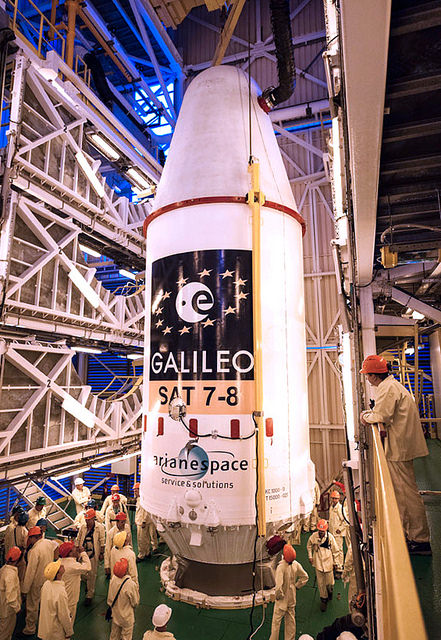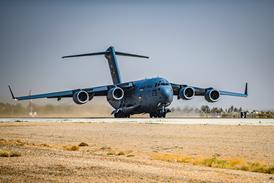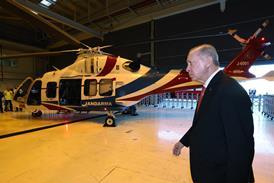After a decade lost to false starts and budget wrangling, and a partial launch failure, Europe’s bid to have its own satellite navigation system received a huge boost from what appears to be a perfect mission to orbit the seventh and eighth spacecraft in what will eventually be a 30-unit constellation.
Indeed, with the successful 27 March orbiting of Galileo spacecraft 7 and 8 after an “easy” launch campaign, the programme is finally “approaching the cruise mode of production, testing and deployment", said Didier Faivre, the European Space Agency’s Galileo director.
Two more satellites are being readied to fly in September, again atop a single Soyuz rocket, from ESA’s French Guiana launch complex, and another two are expected to follow before year-end or very early in 2016. Faivre says that all the pieces are now in place to maintain a six-per-year schedule: production by OHB in Germany using navigation payloads built by Surrey Satellite Technology in the UK; testing at ESA’s ESTEC facility in the Netherlands, which will receive the next two units in April; and launch by Arianespace from South America.
Exact launch dates depend on finding slots in Arianespace’s busy flight manifest, which includes another eight to 10 flights this year. And, says Faivre, space in the schedule is not the only factor that will dictate the timing of the first 2016 deployment; that also depends on readiness of the first Ariane 5 ES launcher, capable of orbiting four of the 700kg-class satellites at once.

Galileo 7 and 8 encapsulated during launcher integration
European Space Agency
But at this point the expectation is that the 26 satellites ordered so far will be in orbit in 2018. And, if ESA and the European Commission, which is paying for the constellation, reach agreement this year or early in 2016 to buy the remaining four, the production-testing-launch regime should have 30 flying in 2020.
What is really on the table – and Faivre stresses that ESA and the Commission are on the same page as far as Galileo is concerned, but budgets have always to be realised – is an order for up to six more spacecraft, to have spares either in orbit or ready to launch.
In any case, once 10 are flying and commissioned, a threshold that should be reached around year-end, the Commission will be in position to begin offering initial services. Geographic coverage and accuracy will increase as more satellites are launched, up to the full constellation of 27 spacecraft and three in-orbit spares.
GIANT LEAP FORWARD
This latest launch was a big moment for Galileo, putting the programme back on track. Four IOV [in-orbit validation] units were launched by Soyuz in 2011 and 2012, and have demonstrated performance beyond expectations. Where specification had been for accuracy to 4m (13ft) horizontally and 8m vertically, the four IOV units have provided 2 x 4m accuracy.
However, the August 2014 launch of the first two production units looked at first to have been a practical failure, with a “major anomaly” in the rocket’s Fregat upper stage leaving them in a useless orbit – and pushing back Brussels’ hopes of initiating partial services by a year. Initially, ESA feared that the satellites, although under control, would become expensive vehicles for the sort of extreme, in-orbit stress testing for which a useful spacecraft would never be spared.
In the end, both were coaxed to useful orbits and, says Faivre, it will be possible to adapt the ground mission to make them fully useable for navigation. Those adjustments, he adds, will take several months and cost “a few million euros” – a fraction of the cost of replacement.
Meanwhile, the urgency of holding to a high-tempo launch programme – and ultimately of having some spare satellites on the ground and ready for launch – is underscored by the condition of the IOV units. These are expected to perform as part of the functional constellation, but one of them has suffered a partial antenna failure and the others, being identical, are at risk of the same fault. Faivre says, however, that a software patch has been developed to give his team better early detection of pending trouble.
At this point, whether the Galileo timetable moves forwards or back by a few months can be deemed immaterial. The project was conceived in the late 1990s and first agreed at the European level in 2003. But by 2007 it was adrift amid technical issues and budget wrangling, leaving the Commission to decide in 2008 to fund the project entirely from the EU budget.
The programme, however, continued to move in fits and starts until 2011, when Antonio Tajani, then Commission vice-president for industry and entrepreneurship, made the realisation of Galileo a cornerstone of his leadership. That year he brokered an agreement to break a cycle of delays by winning concession from industrial partners to cut €500 million ($684 million) from the programme’s industrial costs, to fund the purchase of enough satellites for near-global coverage and initiate a fast-track launch schedule.
Tajani’s determination reflects the Brussels view that satellite navigation is a critical capability over which Europe must have sovereign control. Unlike the USA’s military-operated GPS system, Galileo was designed from the start for civilian use and oversight. And, technically it will offer some advantages over GPS, notably better performance at high latitudes – an obvious European priority. Galileo, which will be compatible with GPS and Russia’s Glonass, also claims to be the first satellite system to integrate a global search and rescue function providing almost real-time localisation of distress calls.
Source: FlightGlobal.com























